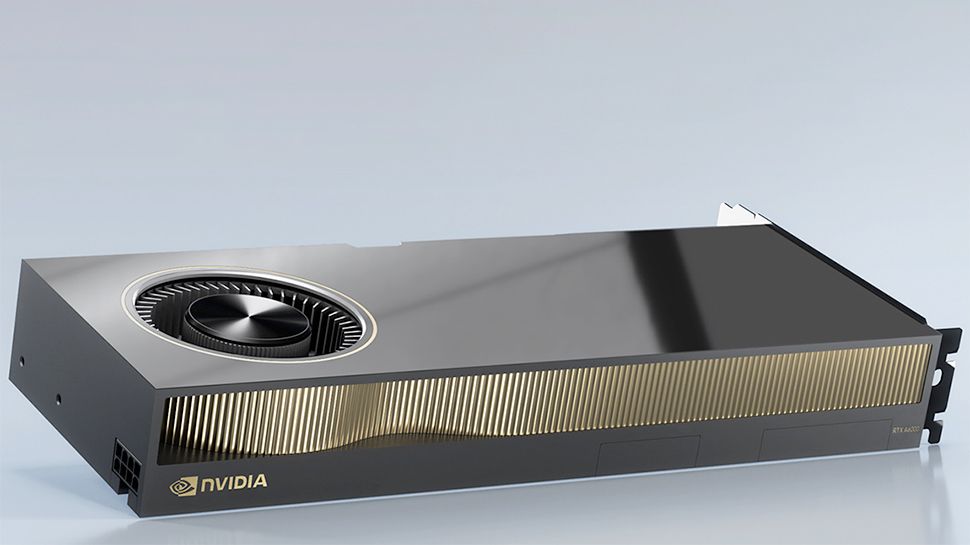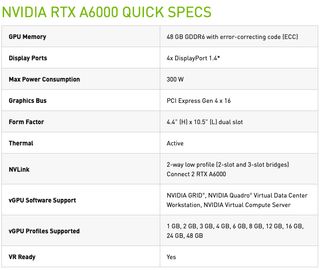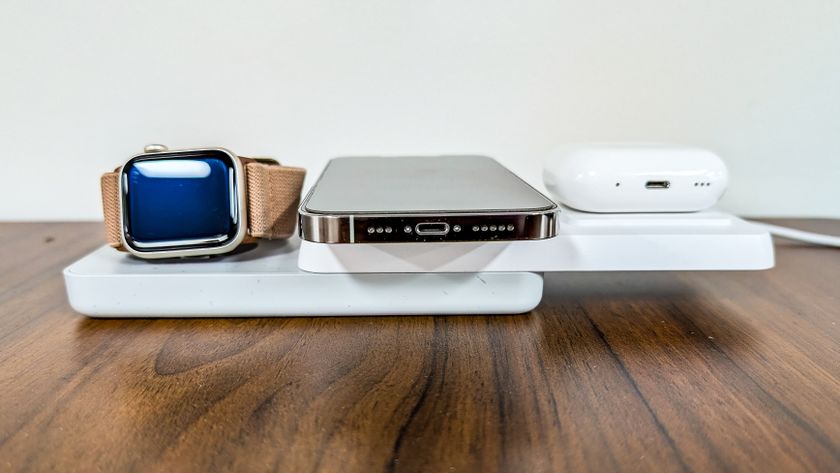Nvidia launches Ampere A40 & RTX A6000 cards for graphics professionals
Nvidia’s Ampere graphics cards for ProViz professionals drop Quadro brand

Nvidia has introduced two new graphics cards designed for digital content creation (DCC) professionals.
The new A40 and RTX A6000 boards are based on the Ampere architecture and therefore offer the richest feature-set that Nvidia has to offer today. An interesting thing about the new cards is that they do not carry Nvidia’s Quadro brand.
Nvidia’s A40 and RTX A6000 graphics cards are based on the GA102 graphics processor and carry 48GB of GDDR6 memory.
For professional boards, Nvidia configured its GA102 chip differently than it did for the prosumer GeForce RTX 3090: the A40 and RTX A6000 feature 10,752 CUDA cores and 336 Tensor cores, but there is no word about their frequencies. Furthermore, because there are no 16Gb GDDR6X memory chips, Nvidia had to use slower 16Gb GDDR6 DRAMs for its A40 and A6000 solutions.
- We've built a list of the best mobile workstations out there
- Check out the best laptops for video editing
- Looking for something more powerful to get today? Here are the best workstations you can buy
48GB may sound like an overkill for a graphics card, but there are highly-detailed 3D models with high-resolution textures that can use more than 24GB of memory. Furthermore, in many cases high-end professional graphics cards are used remotely by several users, so when it comes to memory, the more the better.
As far as performance is concerned, Nvidia says that its RTX A6000 card will offer nearly two times higher performance when compared to the Quadro RTX 8000 board in cases that depend on FP32 and Tensor cores count. Unfortunately, Nvidia does not disclose raw compute performance of its RTX A6000 and A40 GPUs in TFLOPS.

The Nvidia RTX A6000 graphics card is a typical graphics board with active cooling that has four display outputs and an NVLink connector for multi-GPU setups. This is a card designed for workstations, so expect it to be used by companies like Dell, HP, and Lenovo. By contrast, the Nvidia A40 is designed primarily for servers, so it designed to be cooled passively and it has three display outputs instead of four just to meet demands of customers who sometimes have to use servers outside of datacenters. Both cards are rated for a 300W TDP.
Are you a pro? Subscribe to our newsletter
Sign up to the TechRadar Pro newsletter to get all the top news, opinion, features and guidance your business needs to succeed!
Nvidia plans to make its RTX A6000 cards available this December and release the RTX A40 boards sometimes in the first quarter of 2021. Prices are unknown, but they will be considerably higher when compared to prices of Nvidia’s GeForce RTX 3090 graphics cards for prosumers.
It is a little bit odd to see Nvidia dropping its Quadro brand that was first introduced in early 2000 — over 20 years ago — and which has become a de facto standard for professional graphics cards. Recently the company also dropped its Tesla brand for high-performance computing (HPC) applications in a bid not to be confused with Elon Musk’s Tesla automobiles, but Quadro is a word that is associated primarily with Nvidia, so dropping it looks very strange.
Source: AnandTech
Anton Shilov is the News Editor at AnandTech, Inc. For more than four years, he has been writing for magazines and websites such as AnandTech, TechRadar, Tom's Guide, Kit Guru, EE Times, Tech & Learning, EE Times Asia, Design & Reuse.
Most Popular










